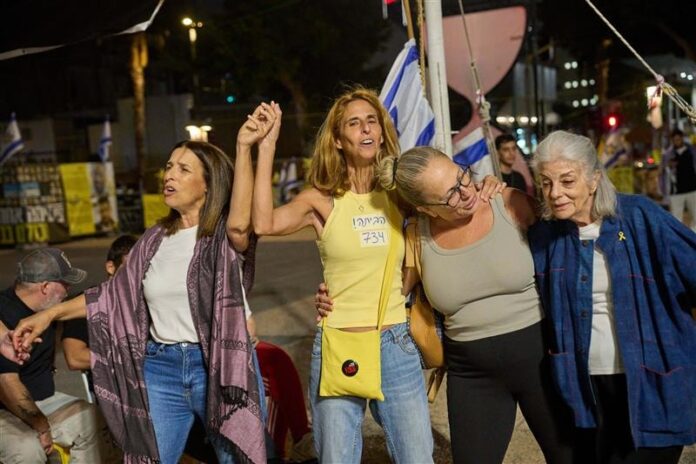A ceasefire with the air of a media operation: under the impulse of Donald Trump, Israel and Hamas announce a deal meant to end two years of war. But behind the triumphant rhetoric, weak signals abound.
In Tel Aviv, on this October 9th, 2025, the “Hostages Square” filled with families in tears, embraces, banners, and tense faces. The announcement of an Israel-Hamas deal has stirred “immense hope,” in the words of French President Emmanuel Macron—ever eager to applaud any event branded as “peace,” regardless of its actual substance. But beyond public emotion, the content of the text remains vague, the Israel Hamas deal already sounds more like a slogan than a sustainable solution.
Trump’s Plan Returns: The Comeback of Transactional Diplomacy
Donald Trump, in perpetual campaign mode, declared himself “proud to announce that Israel and Hamas have both accepted the first phase” of his peace plan. A clever way to reclaim the Middle East agenda after months of diplomatic marginalization. The plan, said to guarantee “durable peace,” relies once again on the give-and-take logic, ignoring geopolitical complexities and the deep scars left on the ground.
The deal includes an immediate ceasefire, a hostage exchange, and the gradual return of humanitarian aid to Gaza. But several weak signals raise eyebrows: Israel’s airspace remains partially closed, strikes continued in Gaza even after the announcement, and Israeli officials stated the deal won’t proceed without “government approval.” Translation: this is also an internal maneuver, aimed at electoral strategy and political control.
Fragmented Diplomacy: The Brokers of the Ceasefire
Alongside Washington, Qatar, Egypt, and—more surprisingly—Turkey, are participating in a joint task force to locate the bodies of deceased hostages in Gaza. Turkey’s involvement signals its quiet return to regional influence after years of diplomatic sidelining.
The Kremlin offered cautious commentary, expressing hope that “the agreement will be followed by action.” A reminder that Moscow is watching and intends to remain a key player in the Middle Eastern power game. The UN, faithful to its incantatory role, called on all sides to “fully respect the agreement.” A familiar refrain, rarely fulfilled.
A Suspect Media Frenzy
Images of celebrations at “Hostages Square,” so photogenic, were widely broadcast. But let’s not forget: in Gaza, bombings continued even as the ceasefire was being announced. This, too, is a pattern: peace is signed at the top while fire rains below. Western media once again chant the mantra of a “historic opportunity,” whenever a U.S. president signs a diplomatic scroll.
UNRWA, the UN’s humanitarian arm, claims to have enough food to feed Gaza “for three months.” The statement may be sincere, but it also echoes the crisis-management rhetoric, lacking any structural vision for long-term stability.
A Cosmetic Deal?
At the time of writing, the Israeli government has yet to approve the deal. Prime Minister Netanyahu is expected to discuss it at 3 PM GMT, according to the official agenda. A way to stall, to let international pressure build while keeping a firm grip on the domestic front. There is no indication that this so-called “historic” phase is anything more than a tactical pause—meant to calm tensions before the next escalation.
It is far too early to speak of peace. In fact, it is dangerous to do so. What we are witnessing is a multilayered communication operation, in which hostages and Palestinian civilians once again serve as bargaining chips. Trump wants his peace photo; Netanyahu wants his power lever; and regional powers want their slice of influence.



